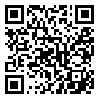BibTeX | RIS | EndNote | Medlars | ProCite | Reference Manager | RefWorks
Send citation to:
URL: http://hayat.tums.ac.ir/article-1-1068-en.html
2- Nursing and Midwifery Care Research Center, Dept. of Critical Care Nursing and Nursing Management, School of Nursing and Midwifery, Tehran University of Medical Sciences, Tehran, Iran ,
Caring is the most central concept in nursing. This concept distinguishes nursing from other health professions. However, according to some experts’ opinions, caring is not an only-nursing concept it is defined as the heart of all health professions. Caring is entered in the philosophy, vision and mission of several health organizations (1) and is introduced as the essence of nursing and the fourth complementary concepts of nursing Meta paradigm (2). Caring, as a central concept in nursing, has led to developing various caring theories. The most popular ones involve the cultural care theory of Leninger and the human care theory of Watson that were presented in the 1970s. In addition, the theory of Roach was developed in the 1980s. Another theory was presented by Boykin and Schoenhofer in the 1990s. These theories can be compared in some aspects including origin, domain, and definition of caring, description of nursing and other key components (3).
| Rights and permissions | |
 |
This work is licensed under a Creative Commons Attribution-NonCommercial 4.0 International License. |





